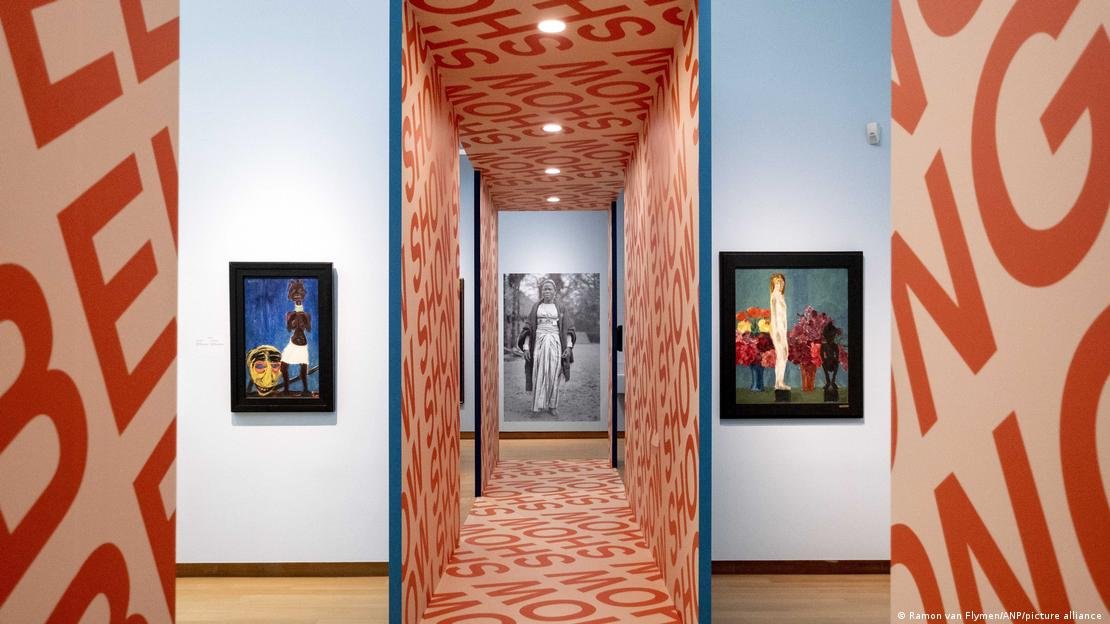Museums struggle to embrace diversity in new documentary

Written by Paula Onusseit. Originally published by dw.com on 27 May 2023.
In December 2019, Rein Wolfs took over as director of the renowned Stedelijk Museum in Amsterdam and quickly set about making its collection and staff more diverse and inclusive.
Along for the ride was filmmaker Sarah Vos, who for three years captured this pioneering effort by a major cultural institution to effect greater diversity in its halls.
Her camera observed as Wolfs, formerly the director of the Bundeskunsthalle in Bonn in Germany, worked with museum staff to evaluate the range of the collection and the exhibition concepts.
The sobering conclusion was that less than 10% of works in the collection are by women. Works by artists who were Black, Indigenous or People of Color (BIPOC) were rarely seen.
The resulting documentary, "White Balls on Walls," not only questions the level of diversity in the museum, but goes deeper to understand the function of art in society.

Museums not thinking 'outside the box'
In the past, cultural institutions had "not thought enough outside the box," Wolfs told DW.
By contrast, Amsterdam's Stedelijk Museum now wants to think more globally, and, for instance, align its diversity concept with the population structure of Amsterdam.
"After all, we want everyone to have the opportunity to also find their own history and their own moments of identification," he said.
The discussion about a new concept raises questions: Can and should diversity be quantified through words or quotas? Should the origin and gender of artists play a role in the evaluation of art?
The Stedelijk team agreed on a quota: From 2021 to 2024, at least 50% of the acquisition budget should be spent on works by BIPOC artists. There are no fixed quotas for works by women, but gender is a factor in the selection process.
Moreover, there is at least one large annual exhibition of BIPOC artists or a group exhibition that addresses diversity, Wolf said.

A multitude of voices reflecting reality
Diversity plays an inherent role in ethnological museums featuring artifacts and art from all over the world, including at Frankfurt's Museum of World Cultures.
The museum focuses on the art of Indigenous people who are themselves minorities in their home countries, museum director Eva Raabe said. Works by women, children and queer people are a further focus of the collection and exhibits.
Raabe said it wasn't not about specific quotas, but rather about the statement artists want to make with their works.
"Through their art, which is an expression of their opinions, their needs, their lives, they tell us about the reality of their lives," she said.
By including a wide variety of perspectives, the selection is inherently diverse, she adds.
Meanwhile, Berliin's KINDL — Centre for Contemporary Art strives for a "highly diversified exhibition program," director Kathrin Becker told DW.
"I also have a personal mission here, which I share with many colleagues in Berlin and elsewhere, and that is to achieve a multitude of voices in the presentation of contemporary art," Becker said.
Gender identity, as well as ethnic and socioeconomic background, are important in this regard, she added.

Some artists remain skeptical
So how are artists responding to the debate about diversity in art and museums? Whom do quotas actually help?
"I would find it almost insulting if the Stedelijk were to do an exhibition of my work just because they are looking for BIPOC artists,"Surinamese-Dutch artist Remy Jungerman says in "White Balls on Walls."
Wolfs, however, said he was not aware of artists not wanting to exhibit their work at the Stedelijk because of the quotas.
But the museum director is not surprised by criticism of Stedelijk's strategy for more inclusivity, and has heard accusations that the museum is putting its political agenda before art.
"We're seen as ‘woke,' and that's a dirty word these days. We get a lot of praise, but we also get a lot of criticism," he said. "But that's kind of a part of this institution; we're a museum that's always very much on the front lines."

'You can always do more'
The museum director sees a shift toward more diversity almost everywhere, not only in museums but in cultural policy and in social movements.
Kathrin Becker of Berlin's KINDL — Centre for Contemporary Art said museum directors were increasingly trying to counter "very Western and Eurocentric" collections with "new ideas," including by "inviting artists who don't represent Western art."
So how can museums become more diverse?
Whether diversity in the museum is ensured with quotas, is achieved through dialogue with artists or is created in multiperspective exhibitions, awareness of the issue appears to be driving change.
As Eva Raabe of Frankfurt's Museum of World Cultures surmises: "You can actually always do more to give smaller groups a voice."